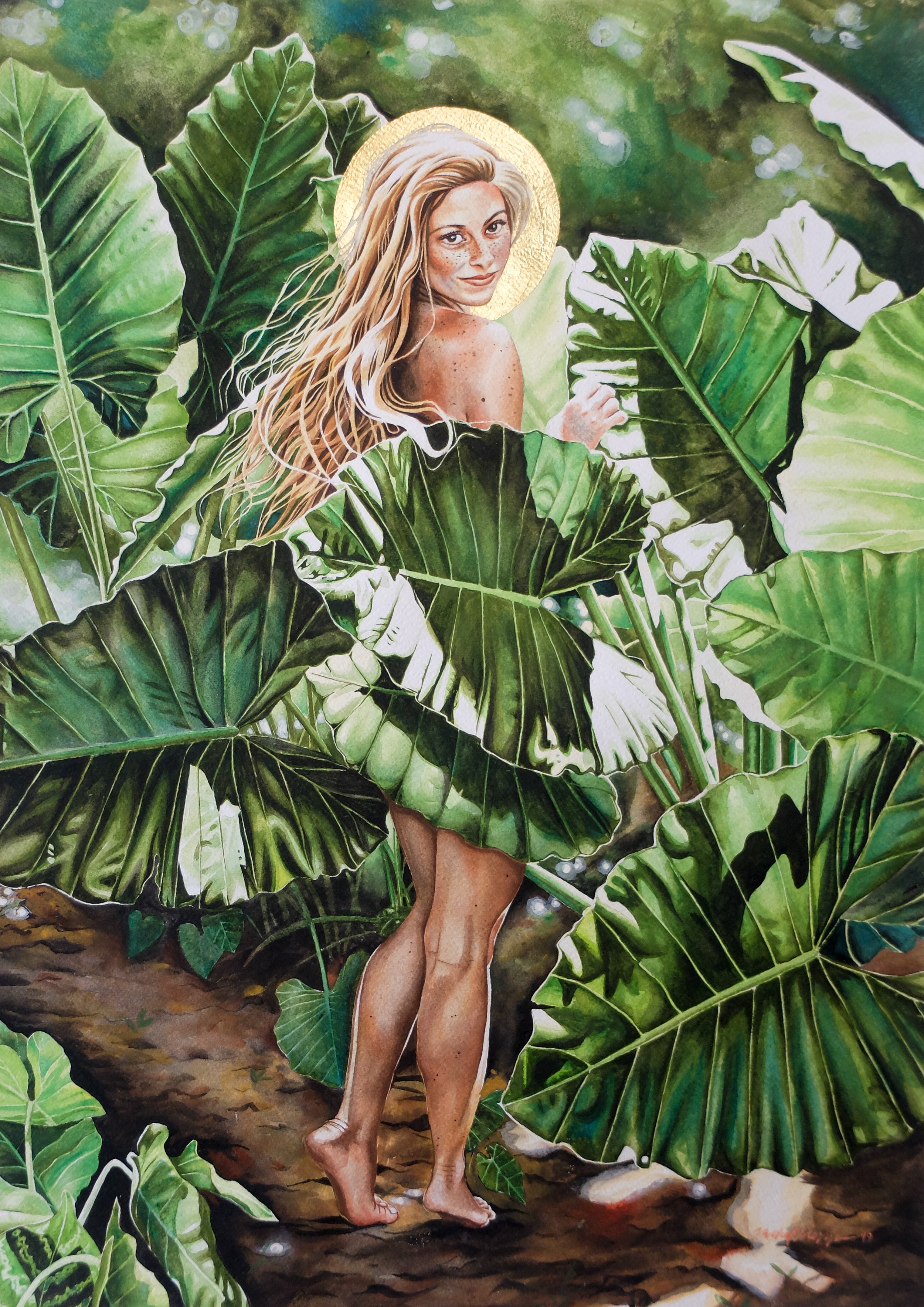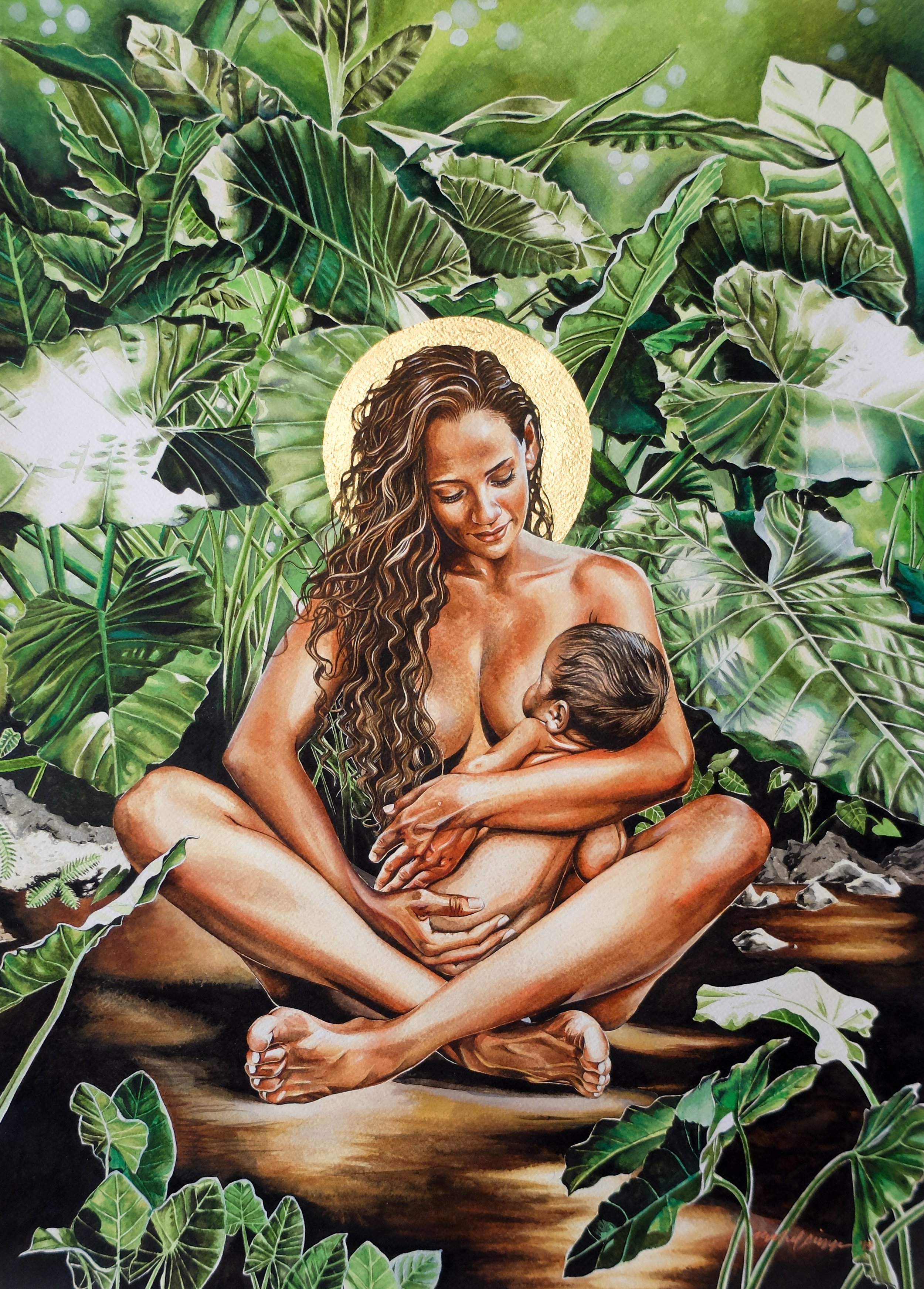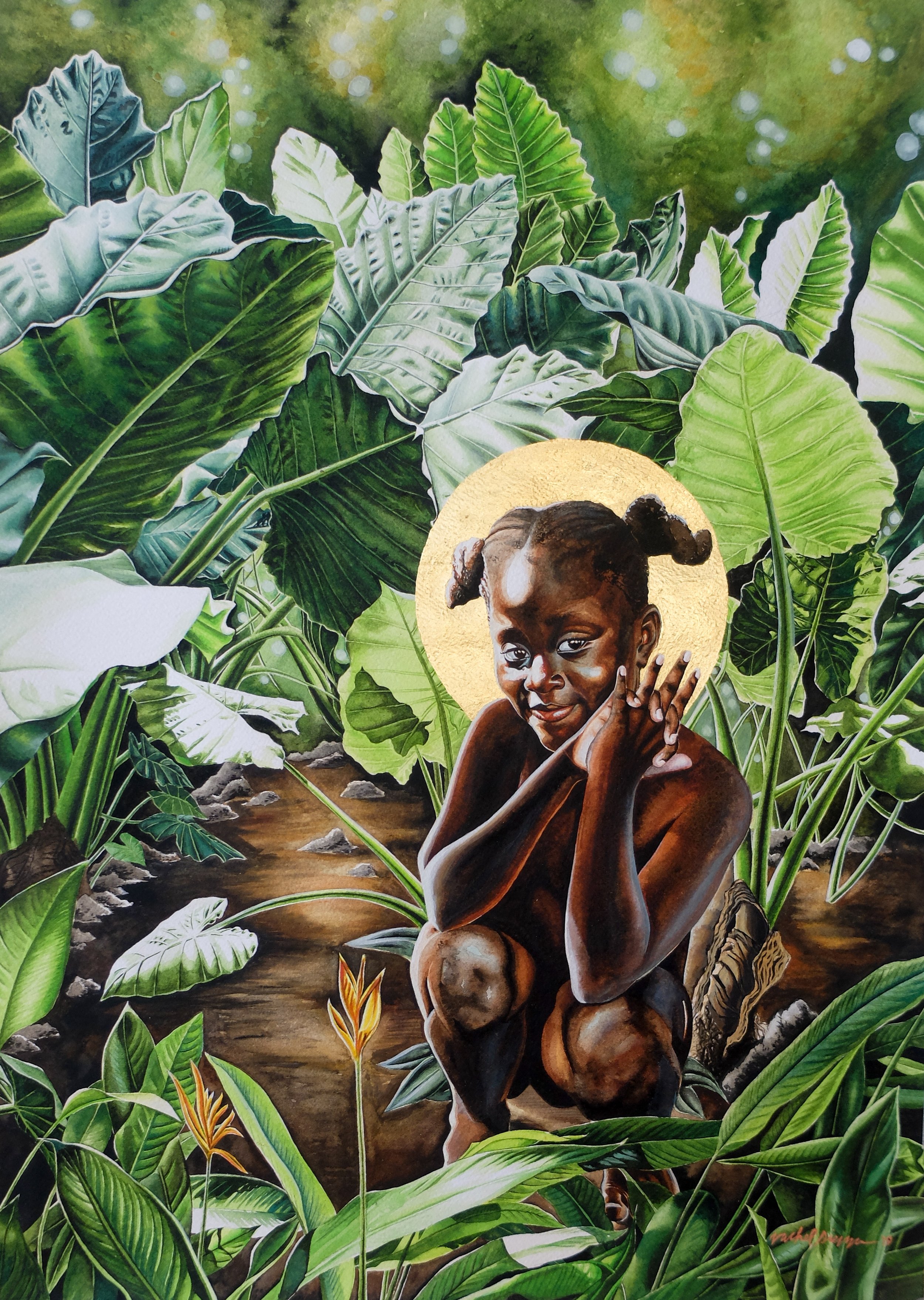


TH E S A C R E D F E M I N I N E
2019
This series is a visual exploration of metaphor, and how by using unexpected imagery we can reflect on our unexamined beliefs and opinions.
Over the course of history humans have believed in an incomprehensible, creative and dynamic force we call the Divine. The only way we can conceptualize the infinite is by symbolism. By and large mainstream Christian faith has relied almost exclusively on the powerful and profound analogy of God the Father. While valuable, if we limit our use of the many metaphors in the Bible to just one, instead of expanding our view of God we may begin to limit it. Humans have always created imagery to symbolize their understanding of the Divine, and what we venerate is what we in turn celebrate in ourselves. If we only see one representation we might begin to believe only certain people are included, or have more intrinsic value.
While the Holy Father imagery has served us well in the past, I believe this moment in history calls for other metaphors. In the current climate of racism, violence and systemic oppression, to use the imagery of a patriarchal (and whitened) view of God, we may begin to overemphasize these traits in our society. If we primarily venerate the most powerful and influential among us, we risk forgetting that God did not reveal himself in strength or might but as a working class person of color, from a marginalized community who suffered under the systemic oppression of a global superpower.
And this is the Gospel message: that hope springs from the least expected corners, from the least influential people, that from death sprouts new life, that peace overcomes violence, that love overthrows hate, of standing against oppression, of centering marginalized communities, and the resounding reminder that everyone, everywhere and everything is sacred.
This series seeks to bring an equilibrium, and to rediscover the ancient metaphor of God the Mother: a God of color, a God of youth, a God of beauty. And what do we discover in a feminine representation of God? Strength and beauty take on a fresh tone. We see our Mother labor for new life with a selfless recklessness. She embraces pain for the joy of a new birth. Her body is broken for us, and her body sustains us. We see a wild, self sacrificing, and a fiercely protective love. We see a profound desire to heal the dissent between children and call us back to one another. We are a family, first. We must put aside our differences. There is space at the table for everyone to be nourished and to thrive. We see not power or hierarchy, but a visceral, resilient and inclusive love.
This series presents another metaphor in its own beauty and depth and invites you, the viewer, to be a participant.
T H E M O T H E R ‘ S P R A Y E R
Our Mother
who art in the cosmos
sacred is your name.
May your children hear your voice
and return to your ever loving embrace.
Give us this day nourishment
from your body, your spirit,
and your lands.
Teach us to walk lightly on this
generous and nurturing earth.
Forgive us when we forget
the beauty of who we truly are.
May we strive to see
the truest self in one another.
Heal our self inflicted wounds,
and absorb our offenses in
your profound empathy.
May we be healers, peacemakers
and empaths in return.
As you fiercely protect us,
may we resiliently defend
the vulnerable
the marginalized
and the oppressed
with nonviolence
as we see you do.
Amen
